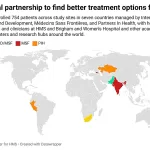August 23, 2024 – As global travel resumes, international health authorities have issued warnings about a lesser-known yet potentially serious illness—Sloth Fever. Contrary to what its name suggests, this illness has nothing to do with the lovable, slow-moving creatures that inhabit South American rainforests. Instead, it’s linked to a mosquito-borne virus that travelers need to be aware of.
What is ‘Sloth Fever’?
Sloth Fever is the colloquial term for an infection caused by the Oropouche virus (OROV), which is formally known as Oropouche fever. First identified in 1955 in Trinidad and Tobago, this virus belongs to the orthobunyavirus family, which is distinct from the more commonly known flaviviruses (such as dengue and Zika) and alphaviruses (like chikungunya).
The symptoms of Oropouche fever are flu-like, including fever, severe headache, chills, muscle aches, joint pain, nausea, vomiting, and a rash. Approximately 60% of those infected become symptomatic. While most individuals recover within a month, there have been rare instances of serious complications, such as encephalitis (inflammation of the brain) and meningitis.
The Current Outbreak: What We Know
The recent resurgence of Oropouche virus is cause for concern. In July 2024, the Pan American Health Organization (PAHO) reported two fatalities in northeastern Brazil linked to the virus—the first known deaths associated with this pathogen. Additionally, there have been reports of severe complications, including a fetal death, a miscarriage, and four cases of newborns with microcephaly, a condition marked by an abnormally small head. This alarming development has drawn parallels to the Zika virus outbreak in 2015-2016, which also led to severe birth defects.
Oropouche virus had historically been a significant health concern in the Americas, but its importance waned following outbreaks of other mosquito-borne diseases, including chikungunya, Zika, and dengue. However, recent data suggests a resurgence, with over 8,000 cases reported across Brazil, Bolivia, Peru, Colombia, and Cuba.
Transmission and Spread
Oropouche virus is primarily transmitted by blood-feeding insects, particularly biting midges (Culicoides paraensis) and various species of mosquitoes, including Aedes, Coquillettidia, and Culex. The virus likely circulates among forest-dwelling animals, including non-human primates, sloths, and birds, with outbreaks occurring when humans enter these habitats or when the virus spreads to urban areas.
The involvement of biting midges adds a layer of complexity to the virus’s transmission cycle, making it distinct from other mosquito-borne illnesses. As the virus continues to spread beyond its traditional geographic range, possibly due to climate change, deforestation, and increased human movement, public health officials are increasingly concerned about its potential to cause more widespread outbreaks.
Should Australians Be Concerned?
While the risk of Oropouche virus spreading to Australia is currently considered low, travelers to South and Central America should take precautions. Unlike in the Americas, the biting midges most responsible for spreading Oropouche virus are not present in Australia, which reduces the likelihood of a local outbreak. However, health authorities should remain vigilant, particularly concerning travelers returning from affected regions.
Australia has its own orthobunyaviruses, but these are not currently associated with significant health risks. Nevertheless, the possibility of new viruses emerging or existing ones mutating underscores the importance of ongoing surveillance and research.
How Can Travelers Protect Themselves?
Given the lack of a vaccine or specific treatment for Oropouche virus, prevention is key. Travelers to South and Central America are advised to:
- Use insect repellents containing DEET, picaridin, or oil of lemon eucalyptus.
- Wear protective clothing, including long-sleeved shirts, long pants, and covered shoes.
- Sleep under insecticide-treated mosquito nets, ensuring the mesh is fine enough to block biting midges.
- Consult a healthcare professional before travel, especially if pregnant or planning to become pregnant, as the virus has been linked to severe outcomes during pregnancy.
While Australian authorities have not yet issued specific warnings, the Centers for Disease Control and Prevention (CDC) and the European Center for Disease Prevention and Control (ECDC) recommend that pregnant travelers discuss potential risks with their healthcare providers.
As Sloth Fever and other emerging diseases continue to challenge global health systems, awareness and preparedness remain critical for safeguarding public health during travel.











